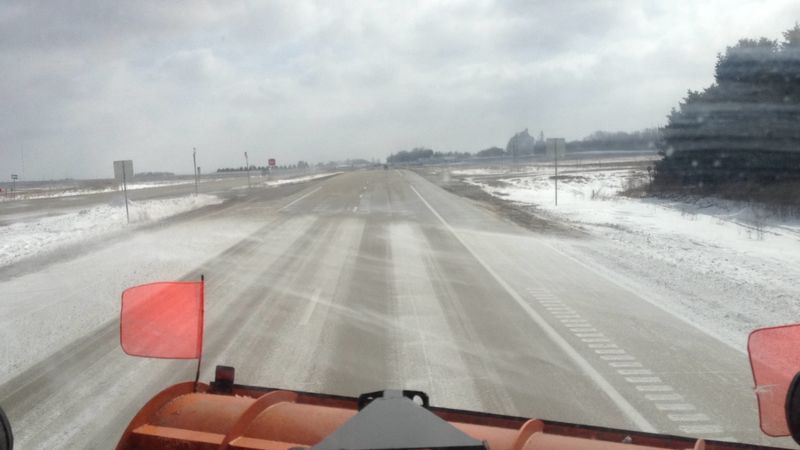Winter in Iowa often means snow and ice, making getting around by vehicle a little tricky. The Iowa Department of Transportation is using more data than ever to find better, more effective ways to treat roads, helping drivers get around more safely and easily.
One of the most critical data points we collect is pavement temperature. Tina Greenfield from the Iowa DOT’s Maintenance Bureau, says, “As you might expect if pavement temperatures are very cold, precipitation and moisture can freeze on the roads causing our treatment options to be different than when pavement temperatures are warmer. Having this accurate data guides our winter operations.”
Currently, pavement temperature data is collected from more than 70 Roadway Weather Information System, or RWIS, stations positioned around the state. These permanent RWIS stations are owned and maintained by the Iowa DOT. Greenfield said, “The stations gather many different data elements including pavement temperature. These, along with sensors in our snowplow trucks, give us a pretty good idea of pavement temperatures on state and U.S. highways and interstates. With that said, a highway system as large as ours will have data gaps. When construction work disrupts an existing RWIS station it adds more gaps in the system.”
Greenfield says the test locations use smaller, battery-operated units that utilize infrared technology to sense pavement temperatures and relay the data over a cellular connection. She said, “This is very similar to the sensor technology we have in our plow trucks. But since we’re just purchasing the data, we don’t incur any of the cellular or power costs. Using infrared technology, there are no sensors in the pavement to install or maintain.”
While the pilot project involves only six small sensing stations located around the state, Greenfield says the expansion of the program has the potential to transform the Iowa DOT’s roadway weather data collection. “If these work out, this can be a very affordable way to get the data. This allows us to gather more data without having to invest in hardware and technology.”
Making the information easily available to our highway maintenance staff for stronger decision making is a priority. Greenfield said, “Since this first pilot project is very small with only six locations, we’ve allowed the vendor to provide the information on a separate website. If the project is successful and expanded, we’ll be requiring that the data be integrated into systems our staff already uses, making the transition seamless.”












